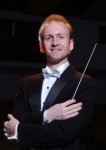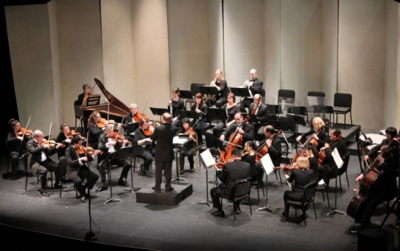“Mozart and More” — Knoxville Symphony Orchestra’s Chamber Classics Series
Knoxville Symphony Chamber Orchestra
Sunday, November 1, 2:30 p.m.
Bijou Theatre, 803 S. Gay Street, downtown Knoxville
Info/tickets
I had the opportunity recently to reflect on the idea of a building having a life and personality that greatly affects the lives of people that use it. (See previous article on Ghosts of Crosstown by Marble City Opera.) While downtown Knoxville contains a number of structures that fall into that category, one must place the Bijou Theatre at the top of the list.
The original part of the building was constructed in 1817 in an early Knoxville that had just turned 25 years old. Operating as a hotel under a number of names and contested ownerships, the structure was an eyewitness to the amazing narrative that was Knoxville in the early 1800s. In 1852-54, a new owner, William Montgomery Churchwell made extensive renovations and improvements, greatly increasing the size of the hotel and its amenities.
After falling on hard times in the 1890s, the building was purchased in 1908 by the Auditorium Company, headed by businessman C. B. Atkin, with the intention of renovating the building into a theater. Most of the added wing area of the hotel was torn down and the theater built in its place. In 1909, the theater opened with a stage production of George M. Cohan’s Little Johnny Jones.
With its bones almost a century old already in 1909, the building had already had many lives and some of its colorful, perhaps blue, history was still to come. Nevertheless, it is doubtful that Atkin or his architect had any clue that over a 100 years later this theater, with many more updates and renovations, would be admired and loved by arts-loving Knoxvillians for its charm and amazingly subtle acoustics. (more on the Bijou’s colorful history)
 The Bijou has been home to the Knoxville Symphony Orchestra’s Chamber Classics series of Sunday afternoon concerts for a number of years. This Sunday’s program should be perfect proof why this space is so important to the chamber orchestra and the chamber ensembles, and for the audience. KSO resident conductor James Fellenbaum has programmed a concert of mostly Mozart, tinged evocatively with Wagner’s Siegfried Idyll.
The Bijou has been home to the Knoxville Symphony Orchestra’s Chamber Classics series of Sunday afternoon concerts for a number of years. This Sunday’s program should be perfect proof why this space is so important to the chamber orchestra and the chamber ensembles, and for the audience. KSO resident conductor James Fellenbaum has programmed a concert of mostly Mozart, tinged evocatively with Wagner’s Siegfried Idyll.
“I love the Wagner,” says Fellenbaum, “and I included that one because I have a kind of working title of ‘Serenades and Symphonies’ that could be a continual or annual program.”

“There were some pieces that I had really been wanting to do, including Mozart’s Symphony No. 35, which has not been done by the KSO recently. I don’t think Maestro Richman ever did it.”
Fellenbaum and the Chamber Orchestra will open with what is regularly called ‘the most popular’ Mozart work, Eine Kleine Nachtmusik, K. 525. Also included on the program is the wind serenade, Serenade in C minor, K. 388, a work for two oboes, two clarinets, two bassoons, and two horns.
One of the characteristics of Mozart is an oxymoron: sophisticated, complex simplicity. If that idea sounds baffling, take in Sunday’s concert in the acoustic clarity of the Bijou. Then, you’ll understand.
MOZART: Serenade K. 525, “Eine Kleine Nachtmusik”
WAGNER: Siegfried Idyll
MOZART: Serenade No. 12
MOZART: Symphony No. 35, “Haffner”








